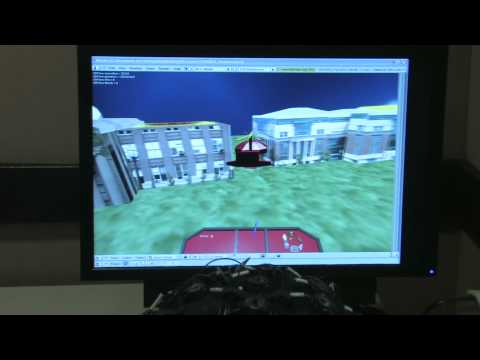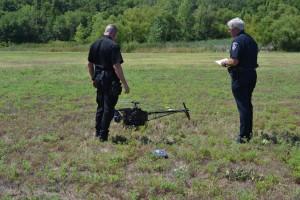Brain-controlled aircraft Students control a helicopter in flight using only brain waves
A remote controlled helicopter has been flown through a series of hoops around a college gymnasium in Minnesota. It sounds like your everyday student project; but there is one caveat: the helicopter was controlled using just the power of thought. The helicopter was controlled by a noninvasive technique called electroencephalography (EEG), which recorded the electrical activity of the students’ brains through a cap fitted with sixty-four electrodes.
A remote controlled helicopter has been flown through a series of hoops around a college gymnasium in Minnesota. It sounds like your everyday student project; but there is one caveat: the helicopter was controlled using just the power of thought. The experiments have been performed by researchers hoping to develop future robots that can help restore the autonomy of paralyzed victims or those suffering from neurodegenerative disorders.
An Institute of Physics (IOP) release reports that their study has been published yesterday, 4 June 2013, in IOP Publishing’s Journal of Neural Engineering.
There were five students who took part in the study and each one was able successfully to control the four-blade helicopter, also known as a quadcopter, quickly and accurately for a sustained amount of time.
Lead author of the study, Professor Bin He from the University of Minnesota College of Science and Engineering, said: “Our study shows that for the first time, humans are able to control the flight of flying robots using just their thoughts, sensed from noninvasive brain waves.”
The noninvasive technique used was electroencephalography (EEG), which recorded the electrical activity of the students’ brain through a cap fitted with sixty-four electrodes.
Facing away from the quadcopter, the students were asked to imagine using their right hand, left hand, and both hands together; this would instruct the quadcopter to turn right, left, lift, and then fall, respectively. The quadcopter was driven with a pre-set forward moving velocity and controlled through the sky with the subject’s thoughts.
The students were positioned in front of a screen which relayed images of the quadcopter’s flight through an on-board camera, allowing them to see which direction it was travelling in. Brain signals were recorded by the cap and sent to the quadcopter over WiFi.
“In previous work we showed that humans could control a virtual helicopter using just their thoughts. I initially intended to use a small helicopter for this real-life study; however, the quadcopter is more stable, smooth and has fewer safety concerns,” continued Professor He.
The release notes that after several different training sessions, the students were required to fly the quadcopter through two foam rings suspended from the gymnasium ceiling and were scored on three aspects: the number of times they sent the quadcopter through the rings; the number of times the quadcopter collided with the rings; and the number of times they went outside the experiment boundary.
A number of statistical tests were used to calculate how each subject performed.
A group of students also directed the quadcopter with a keyboard in a control experiment, allowing for a comparison between a standardized method and brain control.
This process is just one example of a brain-computer interface where a direct pathway between the brain and an external device is created to help assist, augment or repair human cognitive or sensory-motor functions; researchers are currently looking at ways to restore hearing, sight and movement using this approach.
“Our next goal is to control robotic arms using noninvasive brain wave signals, with the eventual goal of developing brain–computer interfaces that aid patients with disabilities or neurodegenerative disorders,” continued Professor He.
— Read more in Karl LaFleur et al., “Quadcopter control in three-dimensional space using a noninvasive motor imagery-based brain–computer interface,” Journal of Neural Engineering 10 (4 June 2013) (doi:10.1088/1741-2560/10/4/046003)

